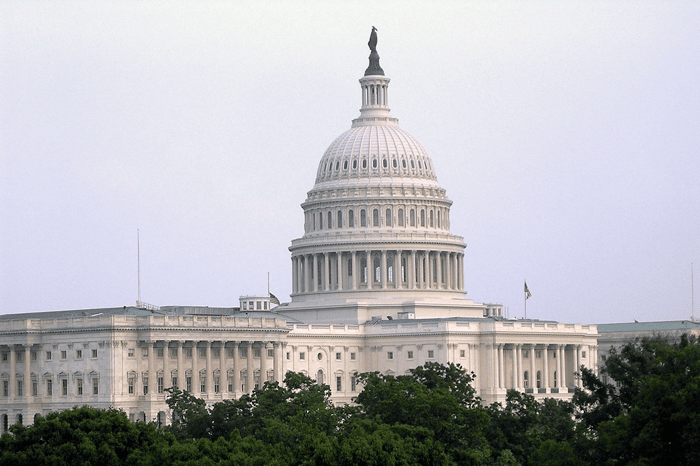The shift has been dramatic. Three years ago, cryptocurrency was toxic in Washington. Regulators dismissed digital assets as gambling chips for tech bros or, worse, tools for criminals and terrorists. Now crypto sits at the heart crypto of American politics, shaping elections and writing the rules for the financial future.
In July 2025, Congress made it official. The GENIUS Act passed the House 308-122, with Democrats joining Republicans to create the first real crypto law in American history. Critics call it proof that a cryptocracy has taken root in Washington.
Table of Contents
The Rise of Crypto’s Political Machine
The numbers tell the story of an industry that learned to play hardball politics. During the 2024 election cycle, crypto-focused political action committees spent over $119 million—representing nearly one-third of all corporate political spending. Fairshake, the industry’s flagship super PAC, outspent traditional powerhouses and demonstrated crypto’s willingness to make or break political careers.
“The Democrats have gotten the message,” noted Anthony Scaramucci, who briefly served as Trump’s communications director during his first term. “They don’t want to be in the 2026 campaign having a crypto army against them.”
The industry’s most notable scalp was Senator Sherrod Brown of Ohio, the former Banking Committee chair and longtime crypto critic. Crypto PACs spent tens of millions targeting Brown, successfully ending the career of one of Wall Street’s most persistent critics. The message to other politicians was clear: oppose crypto at your electoral peril.
Trump’s Crypto Transformation
President Trump’s evolution from crypto skeptic to “crypto president” epitomizes the industry’s political conquest. During his 2024 campaign, Trump promised to make America “the crypto capital of the planet and the bitcoin superpower of the world.”
Trump wasted no time delivering for his crypto supporters. His team scrapped the SEC’s restrictive accounting rules within weeks of taking office. Executive orders followed, creating crypto working groups and installing David Sacks as the administration’s “crypto czar.” When House Republicans threatened to block the GENIUS Act over procedural disputes, Trump stepped in personally to save the deal.
Trump isn’t just a crypto cheerleader—he’s getting rich off it. Through World Liberty Financial, Trump and his family have significant stakes in the crypto economy, including their own stablecoin USD1. This venture reportedly generated $57.35 million for Trump in 2024 alone.
Legislative Victories and Market Impact
The GENIUS Act represents more than symbolic victory—it establishes the regulatory framework for stablecoins, digital currencies pegged to traditional assets like the U.S. dollar. Treasury Secretary Scott Bessent projects this legislation could help stablecoins “grow into a $3.7 trillion market by the end of the decade.”
The regulatory wins are paying off for investors. Take the Bitwise Crypto Industry Innovators ETF (BITQ), which tracks the companies building crypto’s infrastructure. BITQ has become Wall Street’s favorite way to bet on crypto without actually buying Bitcoin. The fund holds everything from pure crypto plays like Coinbase and MicroStrategy to tech giants like PayPal and Nvidia with major crypto divisions.
BITQ’s holdings tell the story of an industry growing up fast. What started as a collection of crypto-only startups now includes household names that see digital assets as the future of payments and finance.
The Infrastructure Behind Influence
Crypto’s political machine runs on more than just campaign cash. The industry has built a Washington operation that rivals oil and pharma—lobbyists, think tanks, and grassroots networks spreading the gospel of digital assets. Blockchain Association CEO Summer Mersinger puts it bluntly: “Every single office needs to be provided with a base understanding of what is cryptocurrency, why does it matter to my constituents and what is the policy landscape.”
This educational approach has proven effective. Coinbase literally sweetened their lobbying efforts by distributing 5,000 chocolate bars around Washington D.C., each wrapper citing polling data showing that approximately one in five Americans now own cryptocurrency.
The industry learned hard lessons from the Sam Bankman-Fried disaster. Back then, crypto’s political strategy depended on one charismatic fraudster with deep pockets. Today’s approach spreads the risk across dozens of companies and trade groups. No single player can bring down the whole operation.
Technological and Financial Convergence
The GENIUS Act’s real prize isn’t political—it’s technological. Stablecoins, digital dollars backed by real cash reserves, can move money across borders instantly and cheaply. No more waiting days for wire transfers or paying hefty fees to send cash overseas.
For regular users, this opens up new possibilities. A Non custodial crypto wallet lets people control their own digital money without banks as middlemen, while specialized tools like an xrp wallet tap into Ripple’s global payment network—all made more viable by clearer regulations.
Big corporations see the potential. JPMorgan Chase, Amazon, and Walmart are all reportedly working on their own stablecoins. They know crypto rails could slash payment costs and speed up transactions that currently crawl through the traditional banking system.
Challenges and Opposition
But crypto’s victory lap faces real headwinds. Consumer advocates argue the industry bought its way to favorable regulations, leaving ordinary Americans exposed to risks. Corey Frayer of the Consumer Federation of America says crypto’s massive spending doesn’t just win votes—it “silences Democrats and other lawmakers who might be opposed but are just plain scared.”
Concerns about Trump’s financial conflicts of interest persist. Senator Raphael Warnock, despite voting for the stablecoin bill, criticized what he called “President Trump’s crypto corruption” and warned that writing legislation with presidential benefits undermines investor confidence.
The industry also faces internal divisions. Bitcoin maximalists oppose proposals for multi-asset government reserves, while different crypto tribes disagree on regulatory approaches. These fault lines could complicate future legislative efforts as the industry’s united front begins to show cracks.
Looking Forward
The next major test comes with the CLARITY Act, comprehensive market structure legislation that would establish clear rules for crypto exchanges and determine which digital assets qualify as securities versus commodities. While the stablecoin bill had broad bipartisan support, the CLARITY Act faces more skeptical Democrats and complex technical challenges.
Crypto industry data shows that 28% of American adults now own cryptocurrencies, nearly double the figure from three years ago. With 60% of crypto-familiar adults believing that values will increase under Trump, the political and economic momentum appears sustainable.
The industry’s transformation from Washington outsider to insider reflects broader changes in American finance and technology. Whether this represents a healthy evolution of financial innovation or a concerning capture of regulatory processes by wealthy interests remains hotly debated.
What’s certain is that crypto has fundamentally altered the relationship between technology companies and government. The industry that once prided itself on decentralization and regulatory avoidance has become masterful at centralized political influence. In doing so, it has secured not just regulatory victories but a seat at the table where America’s financial future is decided.
Crypto has won its war for Washington, but the real battle is just beginning. With Trump in the White House and key laws on the books, digital assets are entering the American financial mainstream whether banks like it or not. The question that matters now is simple: Will crypto’s political victory deliver the innovation and opportunity it promises, or has the industry sold its revolutionary soul for regulatory comfort?
The answer will shape not just crypto’s future, but the future of money itself.

